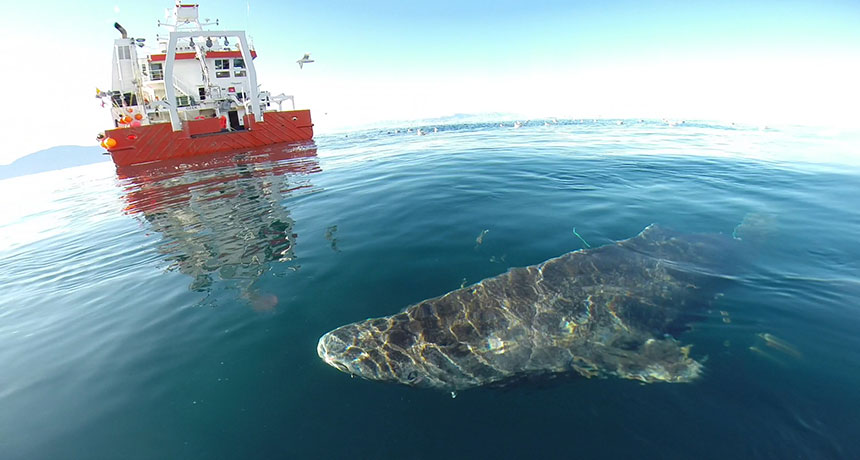Study ranks Greenland shark as longest-lived vertebrate

The latest in birthday science proposes that the vertebrate with the longest life span yet measured is the mysterious Greenland shark.
Dating based on forms of carbon found in sharks’ eye lenses suggests that a large female Somniosus microcephalus was about 392 years old (give or take 120 years) when she died, says marine biologist Julius Nielsen of University of Copenhagen. Even with that uncertainty, the shark outdoes what Nielsen considers the previous record holder: a bowhead whale estimated to have lived 211 years.
The dating comes from the first use of eye-lens dating for a fish, Nielsen says. An analysis that produced the date, involving 27 other Greenland shark specimens, suggests that females don’t reach sexual maturity until they’re about 156 years old, Nielsen and his colleagues report August 12 in Science. Remarkably little basic biology is known for the Greenland shark, though.
And figuring out the age of these sharks has “stymied all solution attempts,” says Steven Campana of the University of Iceland in Reykjavik. ”Given that the Greenland shark is one of the largest carnivores in the world and the king of the food chain [in northern waters], it is almost unbelievable that we don’t know if this shark lives to 20 years or to 1,000,” says Campana, who has long studied shark aging but was not part of this research. Both extremes have been suggested.
Unlike familiar bony fish, such as salmon and cod, sharks don’t have ear bones that build up calcified rings that reveal age. Some sharks, such as the great whites, have some calcified vertebrae that serve, but the Greenland species is “a soft shark,” Nielsen says. And it’s an odd-looking one. He finds that some people are disappointed with their first sight of the big, dark, ponderous beasts because they’re a long way from the stereotype of the great white sharks’ streamlined killer look. “Definitely plump,” Nielsen says.
Working with 28 Greenland sharks of different sizes that were accidentally caught during fisheries surveys, Nielsen and his colleagues examined eye lenses. The highly specialized clear proteins in lenses start with a nugget formed in utero, and studies in mammals have scrutinized that small bit for clues to a creature’s birth date.
Nielsen’s team looked for anomalies in carbon created by the pulse of radioactivity from the 1950s bomb testing in the Pacific Ocean. Radiocarbons worked their way into, and lingered in, all the food webs on the planet. The pulse first reached the sharks’ realms in the North Atlantic in the 1960s, the scientific literature indicates. Nielsen was startled to discover that only three specimens in his collection had the carbon anomalies — and they were the smaller sharks.
He and colleagues used the size of a shark that appeared to have been born just as the bomb pulse was arriving in the ocean food system as a kind of calibration marker. Then, in an elaborate statistical analysis, they used size and growth rates to work out ages for the rest.
Campana is skeptical that Greenland sharks can live nearly 400 years. Other sharks typically live for 10 to 80 years, he says. “I certainly accept that it grows for more than a century.” But to crown the Greenland shark a record holder, he is waiting for future research.
Extreme life spans evolve just like polar bear white fur or long giraffe necks to fit into the sum of ways an organism feeds, dodges its predators and reproduces in its environment. Says James R. Carey of the University of California, Davis, who studies demography across the tree of life, “the really deeper question is once you identify a species that’s long-lived — why?”